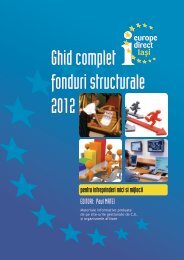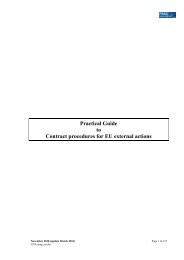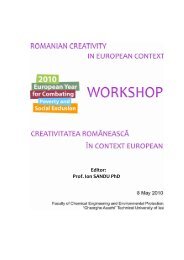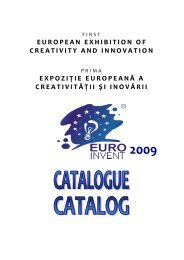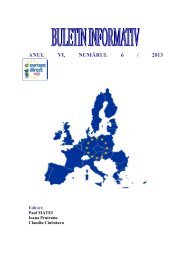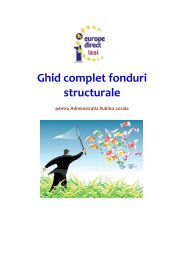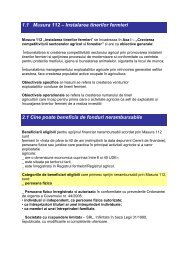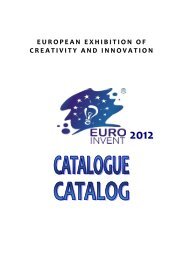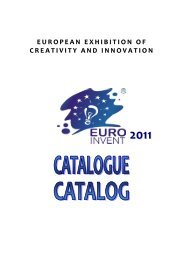eur op eanexhibitionofcreati vityandinnovation - Europe Direct Iasi
eur op eanexhibitionofcreati vityandinnovation - Europe Direct Iasi
eur op eanexhibitionofcreati vityandinnovation - Europe Direct Iasi
You also want an ePaper? Increase the reach of your titles
YUMPU automatically turns print PDFs into web optimized ePapers that Google loves.
EUROINVENT 2013<br />
Description<br />
EN<br />
Class no.<br />
The new pr<strong>op</strong>osed approach to environmental decision making<br />
as a fractal process, is based on the necessity to correct the<br />
„major inconsistencies” observed at the multiple relationships<br />
level: environmental objectives and/ or environmental issues -<br />
environmental activities undertaken - environmental<br />
responsibility, and so on. These inconsistencies were found (a)<br />
after performing a survey through questionnaire on the large<br />
organizations in the North East, Romania, with a sample of 178<br />
environmental managers and/ or managers which carry out<br />
different environmental activities, (b) from discussions with<br />
various experts in environmental management, and (c) as<br />
findings in some previous research.<br />
Environmental decision-making architecture designed following<br />
the principles of fractal philos<strong>op</strong>hy, provides flexibility,<br />
dynamicity, sustainability, quick adaptability to the<br />
environment, and decentralization of the environmental<br />
decision-making objectives.<br />
Regarding to the more tangible benefits it should be noted that<br />
such an new approach offers: (a.) the environmental decision<br />
can be generated after a small series of aspects that are<br />
considered relevant for this process; (b.) decreases the level of<br />
redundancy; (c.) reduce the storage space of environmental data/<br />
information/ knowledge, and environmental reports; thereby is<br />
reduced the costs; (d.) it’s simplifies the analysis/ coding process<br />
of environmental data/ information/ knowledge, (e.) it’s reduced<br />
the response time for the environmental decision; (f.) it’s<br />
decrease the number of connections established at the<br />
environmental decision-making process, and (g.) provides the<br />
basis to devel<strong>op</strong> more easy environmental decision<br />
methodologies with a particular character in order to efficiencies<br />
the decisional process, and so on.<br />
Innovative Researches<br />
NATIONAL<br />
162



